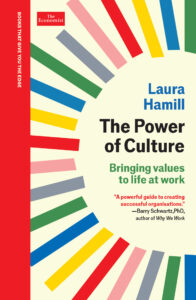

Many companies have focused on the idea of culture fit to hire, promote, and retain people. But in doing so, they tend to gravitate toward those who look like them and act like them — resulting in more of a comfort fit than a culture fit.
Lauren Rivera, an associate professor of management and organizations at Northwestern University in Illinois, calls this “looking glass merit.” It’s the idea that people unconsciously define a candidate’s worthiness as a potential employee in a way that’s self-validating. In other words, they surmise, “If I see myself in you, you must be great (because I’m great). You’ll fit in here well (because I do).”
There’s a real downside to hiring only people you’re comfortable with. When you’re comfortable, you might not hear other perspectives or try new things. And this is a slippery slope into hiring only people with the same background, gender, race, ethnicity, age, ability, and sexual orientation. Using the culture fit approach, you may soon have a company full of people who look the same and act the same.
But sameness isn’t cultural alignment. What’s more, a lack of diversity in thought and background can inhibit an organization’s ability to adapt to complex and rapidly changing environments.
Organizations are made up of diverse individuals with varying backgrounds, experiences, and perspectives — and this is a good thing. Within a cultural context, how these diverse individuals interact provides the backdrop for positioning the organization to meet its business objectives while creating meaning and purpose.
Below are ways that hiring managers/leaders as well as job seekers can reinforce cultural alignment.
Hiring managers and leaders:
1. Cultivate self-awareness. Having an awareness of your own norms, values, and beliefs will help prevent you from imposing the same conventions in your hiring decisions. Especially with cases in which senior leadership are older, white, and male, what they deem important is often formed from their position of privilege and shouldn’t be considered the standard for choosing employees.
2. Emphasize expanding organizational culture. Instead of focusing on culture fit, adopt the idea of “culture add” — finding candidates who share the same core values but also bring something else to the organization that will contribute to making the culture better. This places more emphasis on culture expansion than on rigid adherence to the culture in place. A focus on “culture add” is a healthy way for an organization to be flexible and adaptive but still stay true to its core values.
3. Commit to inclusivity. When seeking to enrich the organization by hiring people with underrepresented identifiers — such as race, physical ability, and sexuality — ensure that the organization has a strong commitment to inclusion and sincerity in place, especially at the leadership level.
Job seekers:
1. Clarify your own values. Before you can know whether a company’s culture is right for you, you first must understand what you value yourself in relation to your work setting. Articulating your values will help create clarity about what matters most and help you determine if the values exhibited by a potential employer will be compatible. A disconnect between personal values and organizational values has real implications. Attempting to suppress or disregard personal values to align with the organization’s values can lead to emotional distress, cognitive dissonance, and a loss of authenticity. Many people in this situation decide to leave.
2. Consider the broad view. Don’t be inflexible about trying to find an exact fit between what you value and the values of the company you’re looking to join. Instead, look for companies that will appreciate what you uniquely bring to the table — as long as they aren’t asking you to conform to a narrow definition of professionalism or success.
3. Search for “we” and “me” balance. A promising way to go about finding a company that honors diverse perspectives is to look for one that has a healthy balance of “we” and “me.” In other words, it is able to unify employees around something bigger and meaningful regarding the organization’s work (the “we”), but also explicitly has an emphasis placed on you being you (the “me”).
Organizations that emphasize an alignment of needs over fitting into a rigid cultural mode are better able to inspire and unite their workforce in the service of common goals. And they are better positioned to meet future business objectives while creating meaning, purposeful, and positive day-to-day work experience.

